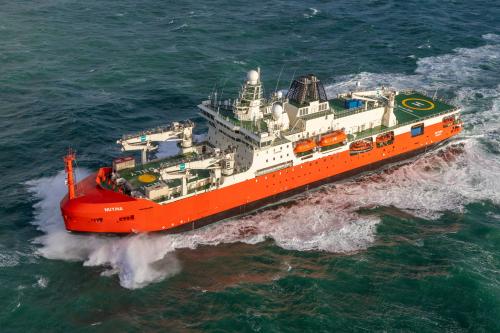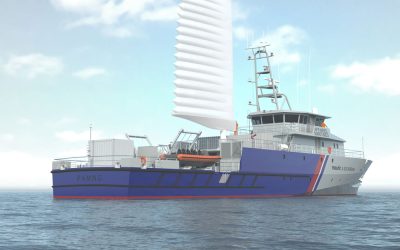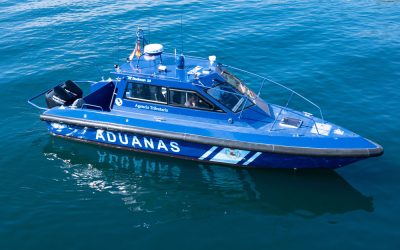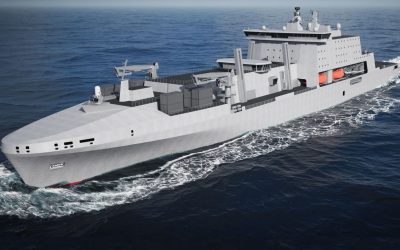The 160.3m-long vessel is capable of carrying 1,200tonnes of cargo, 1.9 million litres of fuel and has space for 96 shipping containers in its 5,030m³ hold.
Its shipbuilder, Damen, highlights that the vessel’s design is guided by the difficult weather and sea conditions it will face and ice breaking capabilities necessary for voyaging in the Southern Ocean.
“The RSV Nuyina will operate in a diverse environment from the south coast of Australia down to the Antarctic coastline, from warm water to frozen seas and every time passing the Roaring 40s, Furious 50s and Screaming 60s to move from one to the other. Those together form the key parameters of the hull design, as it needed to be a heavy icebreaker and transit fuel efficient with good seakeeping capabilities.”
Nuyina is designed to outmatch its predecessor, the 94.9m-long Aurora Australis, and this is particularly evident in its icebreaking capabilities.
As Rob Bryson, the AAD’s General Manager of Assets and Infrastructure, tells The Naval Architect: “The Nuyina can break 1.65m of ice at a continuous speed of 3knots. It has a maximum speed of 16knots in open water. The Aurora could break 1.25m of ice at about 2.5knots, and had a max speed of 16knots. The Nuyina’s unique bow and hull design, however, allows it to continuously slice through the ice, unlike the Aurora’s backing and ramming approach.”
As Nuyina’s shipbuilder, Damen, explains, the ship’s hull is designed according to typical icebreaker guidelines, but with a bow for bending and breaking the ice layers ahead rather than crushing: “The typical icebreaker bow has a small stem angle from the waterline down to the keel. The verticals in the bow area are designed with similar angles. In the horizontal plane, the waterlines are shaped with gentle curvature until joining the parallel hull. The cross sections in the bow area are also designed with gentle flare angles near the waterline. The hull design reflects these design guidelines very well.”
“When moving in ice, the sheet will be forced downward. The bending results in its failure and pieces of broken ice will submerge under the moving bow. The ship’s bottom is designed with a slightly raised floor. This helps the broken and submerged pieces of ice sliding aside rather than travelling the hull length. It avoids additional hull resistance and propeller-ice interaction.”
To build a ship capable of withstanding the weather conditions in the Southern Ocean, Damen adds that the vessel has been optimised within the design constraints of an icebreaker hull and proven to behave well in heavy seas during sea trials.
“In terms of seakeeping, the ship is designed so that helicopter operations can be conducted in up to sea state 3 (1.25m wave height), while davits to deploy watercraft can operate in moderate seas, up to sea state 4 (2.5m wave height). The ship can also transit at 12knots, or conduct stationary scientific equipment deployments, in rough seas, or sea state 5 (4m wave height).”
Another crucial aspect of the scientific research vessel’s hull design was preventing disruption of its hull-mounted acoustic instruments, which are used for measuring the biomass of marine organisms such as fish and krill, and mapping the seafloor and continental shelf.
CFD modelling was used in the design phase to optimise the ship’s hull and propeller form, including a wig shaped skeg forward to guide bubbles to the side and away from the area of the ship hull’s devices, such as its multibeam echo sounders.
Damen comments: “Their shapes ensure any bubbles, formed as the ship moves through the water, don’t interfere with the acoustic equipment. We built a 6m scale model of the vessel to conduct physical tests in facilities of HSVA that included calm water tanks, wave tanks and an ice basin. The tests focused on powering, manoeuvring, ‘seakeeping’ (motion response to waves), icebreaking, and bubble formation and movement.”
Full article can be found in the September 2021 edition of The Naval Architect




